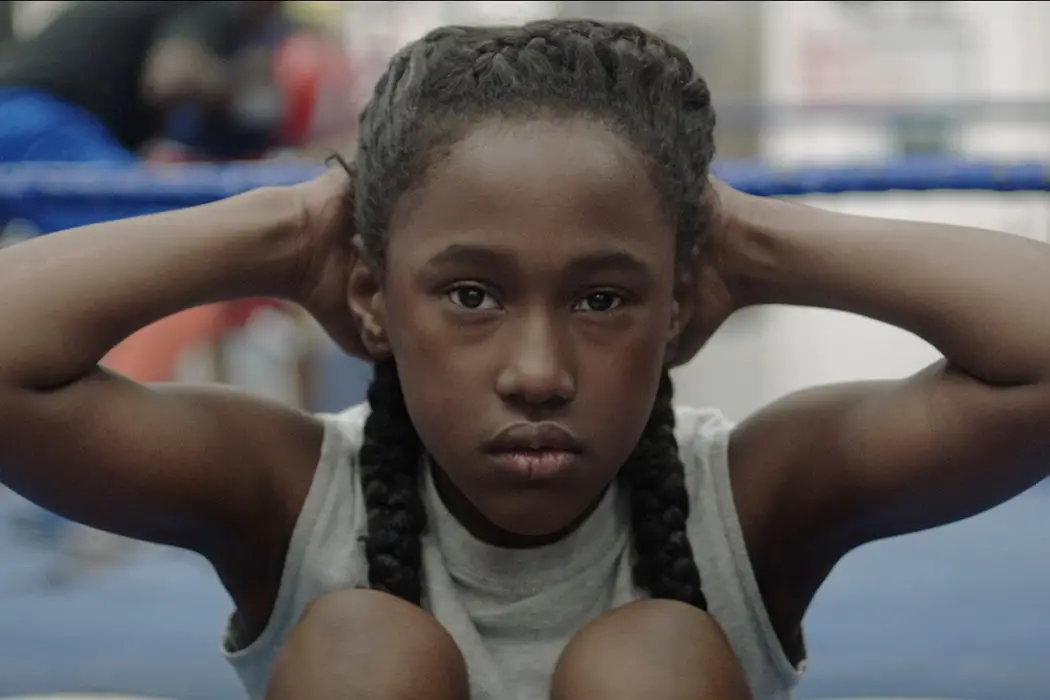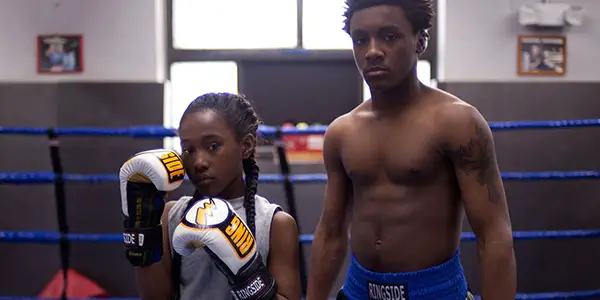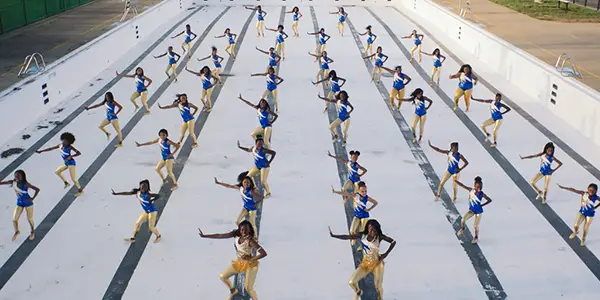THE FITS: Navigating The Mazes Of Maturity

Daniel is a writer based in Sheffield, UK. He has…
As much as the discussion of 2016 has been about cinema’s dwindling cultural primacy, flickers of resistance to the culture of mainstream stagnation are evident. Like any industry, cinema has its cycles of boom and bust, and we appear to be on the brink of an incline. The tentpole cannot hold for much longer. The preferred historical analogy would be mid-’60s Hollywood, when studios conceded that the bloated spectacles they were offering no longer chimed with popular sentiment, and control was handed over to the artists.
In the face of an ever-growing mainstream malaise, something is happening on the margins. There were a number of sterling works last year, but few struck as deep and unnerving a chord as Anna Rose Holmer‘s directorial debut.
The Fits is a micro-budget marvel which both carries a heady sense of the historical and points towards a necessary adjustment in the approach to story. Holmer seems to be responding to the recalibrations of our relationship to narrative in a way the sclerotic mechanisms of Hollywood are incapable of doing.

Toni (Royalty Hightower) is an 11-year-old tomboy who trains with her brother, Jermaine (Da’Sean Minor), in the boxing gym at the Lincoln Community Center in Cincinnati. In the hall across from the gym, a drill dance troupe called the Lionesses is practicing. Toni watches the Lionesses and is caught mimicking their moves by Jermaine, who encourages her to try out. As Toni and her group of ‘crabs’ struggle to master a ‘clap back call’, senior members of the Lionesses are hit by violent, convulsive fits which appear to have no cause.
Codes and Totems
Few films could be said to possess the ability to truly represent the motions of the unconscious; but The Fits seems to function according to a dense, enigmatic dream-logic, weighted with allegorical resonances and subtle clues. The film has at its heart a profound sense of the uncanny; in which the unfamiliar is inserted into the heart of the familiar, and vice versa. Holmer offers a treatment of the ways in which identity is constructed.
Holmer achieves this effect in a number of ways. The Fits is, at its heart, a collaboration with its cast. The Q Kidz Dance Team was encouraged to work with writers Holmer, Saela Davis and Lisa Kjerulff to workshop characters and rewrite dialogue. The result is that one never has to endure children delivering dialogue patently written by an adult to sound childlike. Authenticity is a thorny word, but the film is filled with unaffected supporting turns like Alexis Neblett‘s hyperactive Beezy and Lauren Gibson‘s phlegmatic Maia.

Nowhere is this approach more perfectly realised than with Hightower, who excised a large number of her lines in favour of conveying the same information physically. It is a sign of her maturity that Hightower understood the power of her own countenance in articulating the tensions inherent within Toni. She delivers a remarkably poised performance in which fragility battles discipline. Toni is an interloper in both of the worlds she partially occupies; watching the ‘stand battles’ with a mixture of dread and desire; trying to decipher the codes and totems of burgeoning adolescence; struggling to subsume herself in its rituals.
The Possibilities of the Frame
Holmer‘s background as a camera operator is evident in the use of framing and focus; though equal credit must go to D.P. Paul Yee. The frame is harnessed to startling effect, serving to elucidate the gaps in the film’s elliptical story structure. The decision to shoot in widescreen runs counter to the trend for Academy Ratio, the camera moving in barely perceptible pans and tracks which seeks to replicate Toni’s tentative steps between worlds. The pacing of Saela Davis‘s editing has a hypnagogic quality; an effect heightened by Saunder Jurriaans and Danny Bensi‘s score, whose discordant bursts and sustained notes call to mind twentieth-century ‘indeterminate music’ pioneers like Morton Feldman.
In keeping with this indeterminacy, one of the joys of The Fits is its ambiguity. One could feasibly read the film in any number of ways – as a study of adolescence, social deprivation, the family unit, the supernatural – but the film is thrillingly resistant to fixed interpretation. One way to understand it is as a kind of Gothic body horror; the story of a girl on the cusp of womanhood grasping the enormity of the transformation she is about to undergo – Beezy surmises that the fits may be ‘some kind of boyfriend disease’.

Another compelling reading of The Fits concerns the imitative quality of identity. Toni and her fellow neophytes are told to ‘stop thinking like an individual and start thinking like a team’ and ‘this is your family now’. Toni’s otherwise genial relationship with her brother is disrupted when she chooses to assert an identity beyond that of his loyal factotum. Drawing on historical precedent like the Salem Witch Trials and the ‘dancing mania’ of the Middle Ages, Holmer creates a setting in which hysteria is inculcated and takes on a performative dimension, striking a thematic chord with Carol Morley‘s The Falling.
The Verdict
There is a moment in The Fits which perfectly sums up the unalloyed joy and nebulous threat which coexist in Holmer‘s mesmeric debut: Toni stands on an overpass at the periphery of the community center grounds. She is rehearsing the movements of the clap back call. A soundtrack of handclaps builds to a crescendo, merging with distant traffic noise. The camera zooms slowly in on a beaming Toni as she loses herself in the action.
This should be an exultant moment, but it is underscored with an awareness that something fundamental is about to alter, and the precise form this new composition will take remains hazy and portentous. This steady, tremulous transition is what The Fits dramatises so eloquently, alluding to the contours of the form it will take. Its evocation of youth is shot through with an underlying grief for what is being left behind.
Holmer has gifted us a disarming and enigmatic work; an endlessly engaging puzzle whose secrets are held in its echoing halls, empty swimming pools, balloons, and temporary tattoos. The Fits positions Holmer at the vanguard of new voices, possessing the potential to enliven the frozen forms of mainstream cinema if given the opportunity.
What are your thoughts on the portrayal of gender archetypes in The Fits?
The Fits is released in the UK on February 24th. Find international release dates here.
Does content like this matter to you?
Become a Member and support film journalism. Unlock access to all of Film Inquiry`s great articles. Join a community of like-minded readers who are passionate about cinema - get access to our private members Network, give back to independent filmmakers, and more.
Daniel is a writer based in Sheffield, UK. He has contributed to sites like HeyUGuys, The Shiznit, Sabotage Times, Roobla, Column F and The State of the Arts. He has a propensity to wax lyrical about Film Noir on the slightest provocation, which makes him a hit at parties. The detritus of his creative outpourings can be found at waxbarricades.wordpress.com.













